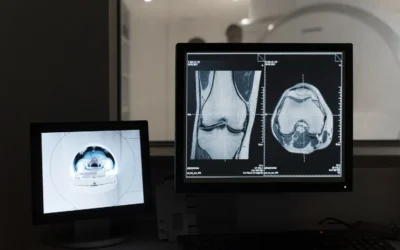The American Cancer Society’s annual Breast Cancer Statistics report has unveiled a complex picture of progress and challenges in the fight against breast cancer. While diagnosis rates have been steadily climbing for a decade, mortality rates have simultaneously declined significantly. This juxtaposition of trends paints a nuanced portrait of the disease’s impact on American women and highlights the need for continued vigilance and targeted interventions.
Table of Contents
Rising Diagnosis Rates: A Closer Look
Since 2012, breast cancer diagnosis rates have increased by 1% annually, a trend that has persisted through 2021. This uptick, however, is not uniform across all demographics. Women under 50 have experienced a more pronounced increase, with diagnosis rates rising 1.4% annually since 2012. This disproportionate impact on younger women raises questions about potential environmental factors, lifestyle changes, or improved early detection methods that may be contributing to this trend.
The Asian American and Pacific Islander Experience
Perhaps the most striking finding in the report is the significant increase in breast cancer diagnoses among Asian American and Pacific Islander (AAPI) women. This demographic has seen annual increases between 2.5% and 2.7% since 2012, with women under 50 bearing the brunt of this rise. In fact, since 2000, breast cancer rates among AAPI women have surged by an alarming 50%. This dramatic increase calls for targeted research to understand the underlying causes and develop culturally appropriate interventions.
Mortality Rates: A Silver Lining
Despite the rising diagnosis rates, there is cause for cautious optimism. Mortality rates from breast cancer have decreased by 44% since 1989, preventing over 500,000 deaths. This significant decline can be attributed to advances in early detection methods and improvements in treatment protocols. The medical community’s ability to detect breast cancer at earlier stages, coupled with more effective and targeted therapies, has undoubtedly saved countless lives.
Persistent Disparities
However, the decline in mortality rates is not uniform across all populations. Black women continue to face a 38% higher risk of death from breast cancer compared to their peers. Moreover, they experience lower survival rates for every cancer subtype and stage when compared to white women. These persistent disparities underscore the need for targeted interventions and a renewed focus on health equity in breast cancer care.
The Impact of COVID-19
The report also touches on the potential long-term consequences of the COVID-19 pandemic on breast cancer outcomes. Interruptions in screening programs and delayed diagnoses due to healthcare system disruptions may have far-reaching effects that are yet to be fully understood. As the healthcare system continues to recover from the pandemic, it will be crucial to monitor these impacts and develop strategies to mitigate any negative consequences.
Looking Ahead: Projections for 2024
The American Cancer Society estimates that 2024 will see over 300,000 new cases of breast cancer diagnosed in the United States, with more than 40,000 potentially fatal cases. These projections underscore the ongoing significance of breast cancer as a public health concern and the need for continued research, prevention efforts, and improved access to care.
The Role of Early Detection and Treatment Advances
The encouraging decline in mortality rates can be largely attributed to advances in early detection methods and treatment options. Improved screening technologies, such as 3D mammography and breast MRI, have enhanced the ability to detect cancers at earlier, more treatable stages. Additionally, targeted therapies and immunotherapies have revolutionized treatment approaches, offering more personalized and effective options for patients.
Addressing Disparities: A Call to Action
The persistent disparities in breast cancer outcomes, particularly among Black and AAPI women, demand urgent attention. Efforts to address these inequities should focus on:
- Improving access to high-quality screening and treatment for all women, regardless of race, ethnicity, or socioeconomic status.
- Increasing representation of diverse populations in clinical trials to ensure that new treatments are effective across all demographics.
- Enhancing cultural competence in healthcare delivery to better serve diverse communities.
- Investing in research to understand the biological and environmental factors contributing to disparities in breast cancer incidence and outcomes.
The Path Forward: Research and Prevention
As we confront the rising tide of breast cancer diagnoses, continued investment in research is crucial. Areas of focus should include:
- Identifying risk factors contributing to the increased incidence among younger women and AAPI populations.
- Developing more precise screening protocols tailored to individual risk profiles.
- Advancing our understanding of breast cancer biology to inform new prevention and treatment strategies.
Moreover, public health initiatives should emphasize modifiable risk factors for breast cancer, such as maintaining a healthy weight, limiting alcohol consumption, and promoting physical activity.
Conclusion: A Multifaceted Approach
The latest breast cancer statistics reveal a complex landscape of progress and persistent challenges. While the decline in mortality rates is encouraging, the rising incidence, particularly among certain demographics, demands attention. As we move forward, a multifaceted approach combining research, improved access to care, and targeted interventions to address disparities will be essential in continuing to reduce the burden of breast cancer on American women.
By leveraging the advances in early detection and treatment while simultaneously addressing the root causes of disparities, we can work towards a future where breast cancer no longer poses such a significant threat to women’s health. The fight against breast cancer requires ongoing commitment, innovation, and a steadfast dedication to health equity for all.





0 Comments